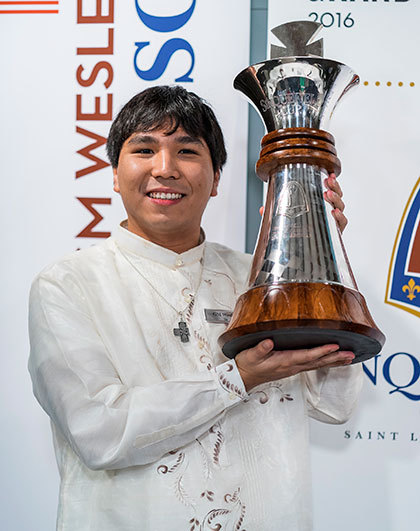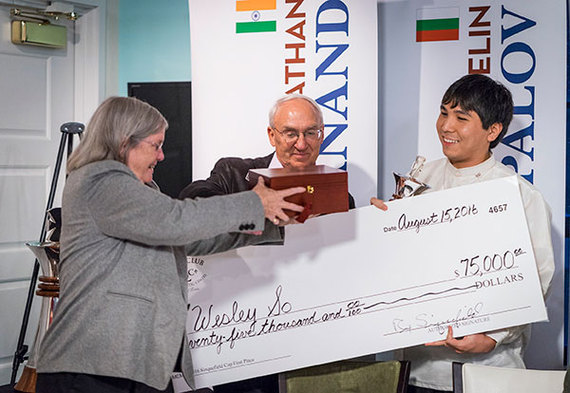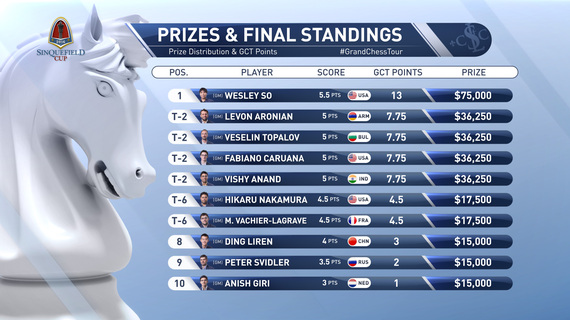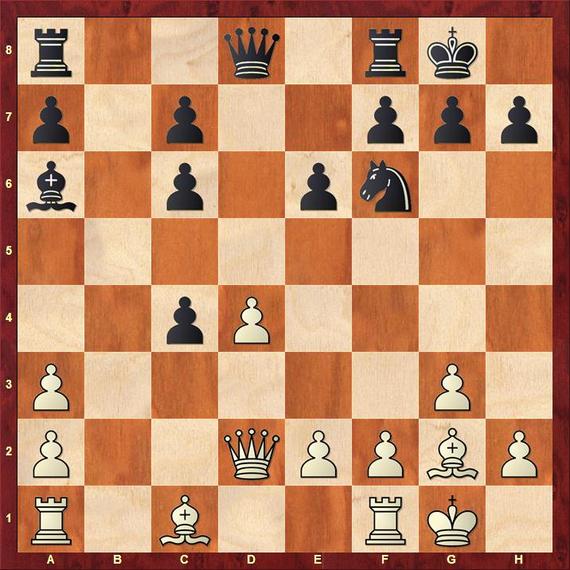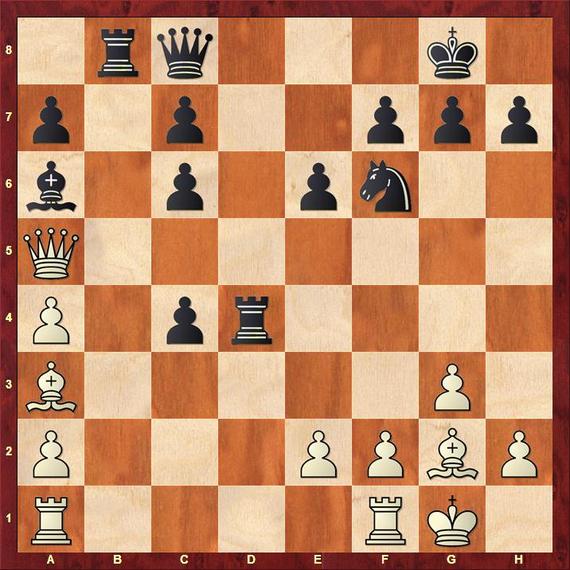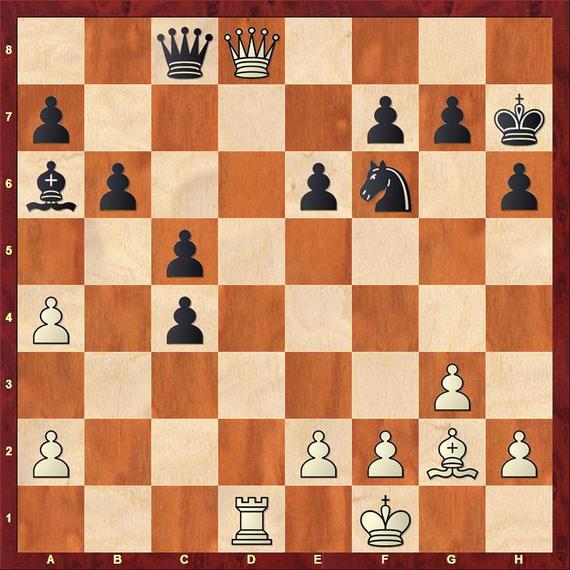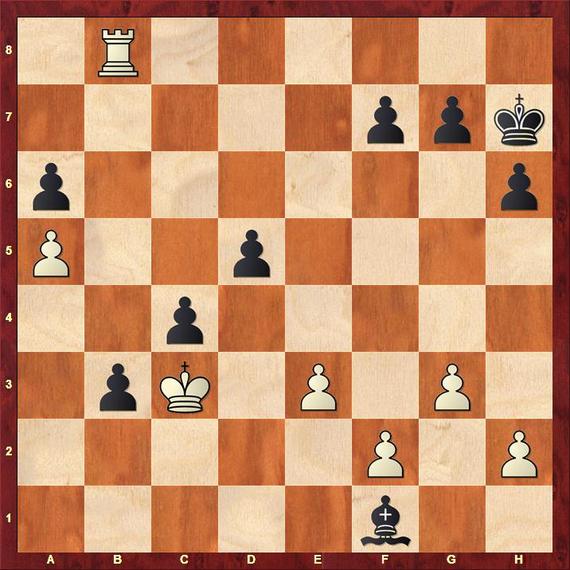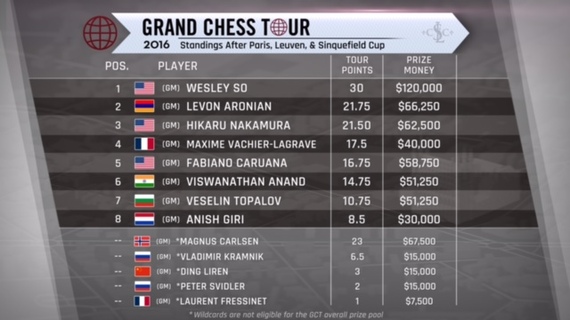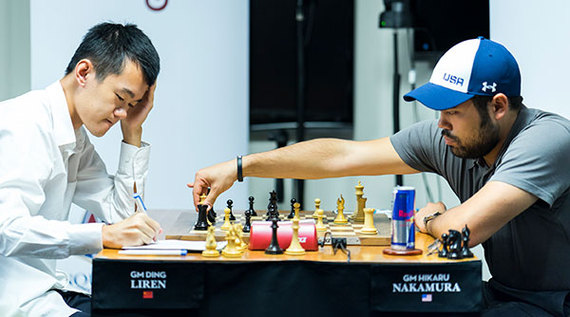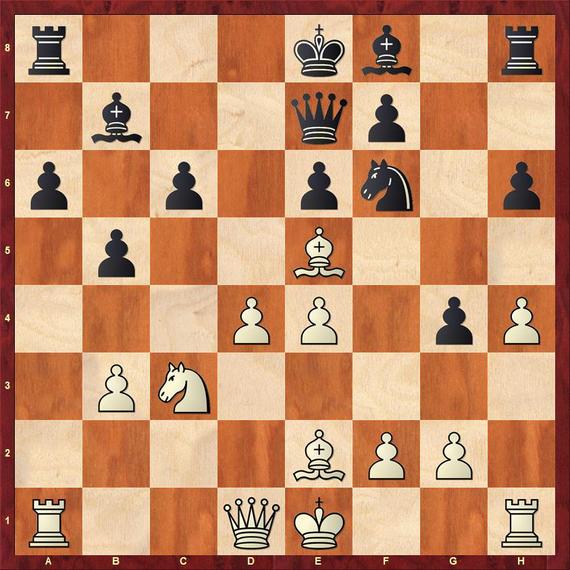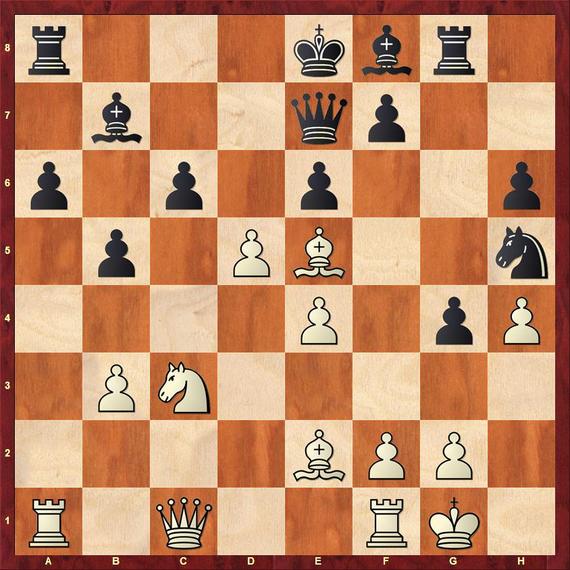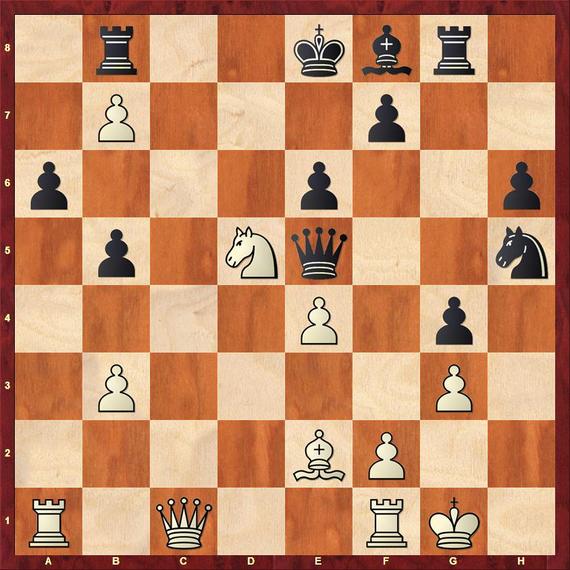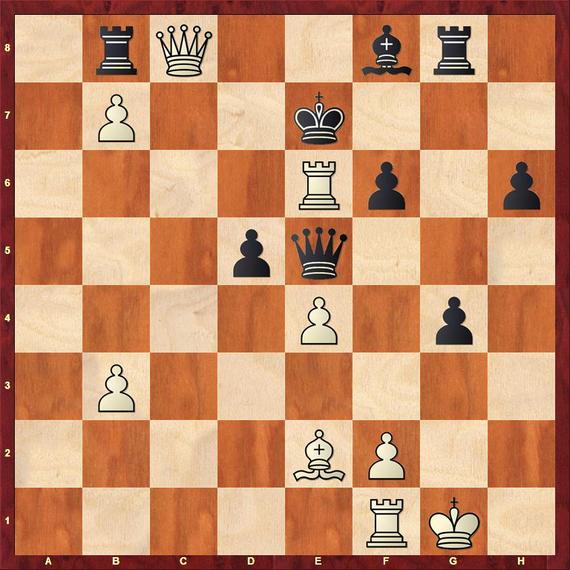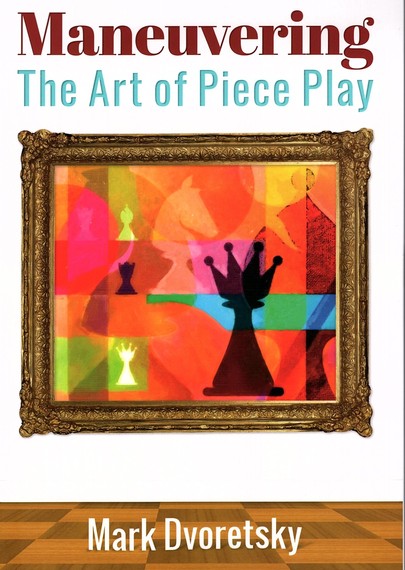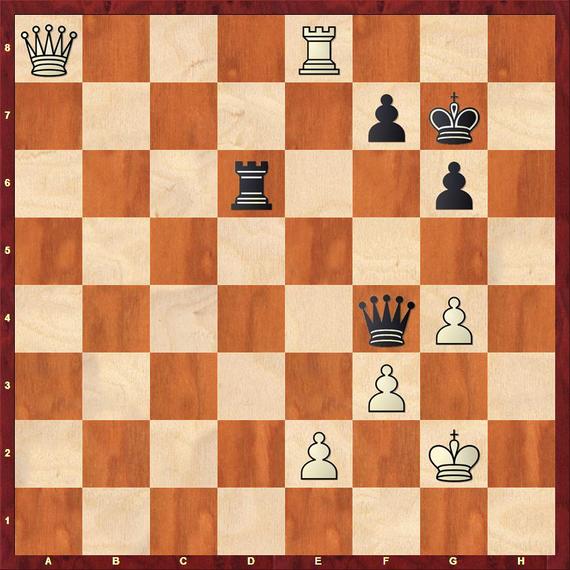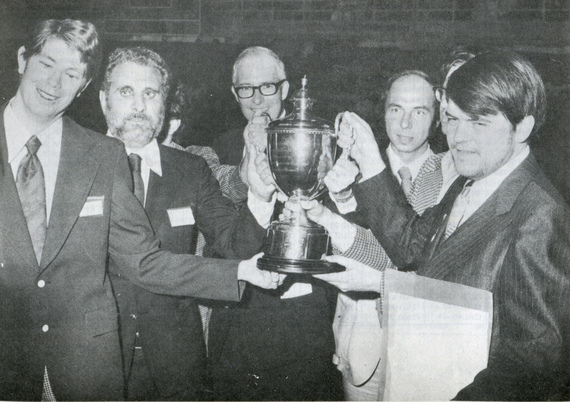"I am living a dream," exclaimed Wesley So after winning the 2016 Sinquefield Cup, the strongest chess tournament of his life and one of this year's best. With this victory he took the lead in the Grand Chess Tour, a series of four Grand Prix tournaments.
Born in the Philippines, where his talent was compared to that of Bobby Fischer, So moved to the United States a few years ago and will represent his adopted country at the Chess Olympiad in Baku in September for the first time.
So, 22, has won strong tournaments before, but his victory last Sunday at the Chess Club and Scholastic Center of Saint Louis was special. Only two grandmasters from the absolute top, the world champion Magnus Carlsen and the former world champion Vladimir Kramnik, were missing. Last year he was the wild card in the Sinquefield Cup and finished last; he sure turned things around this year.
So finished undefeated. A pack of his rivals followed him closely and he had to wait for the final outcome of the game between the former world champion Veselin Topalov and Armenia's leading grandmaster Levon Aronian. It was an emotional battle lasting 81 moves.
At one point the former world champion Garry Kasparov joined the commentating team and explained how Topalov could have played better and what all he missed. Despite these inaccuracies, the Bulgarian grandmaster was still winning, but he struggled to close the deal.
Around that time the great Jamaican sprinter Usain Bolt was explaining to NBC's Bob Costas why he wants to win three gold medals at the Olympic Games in Rio before he retires. This golden trifecta - 100m, 200m and 4x100m - would be his third in the last three Olympic games. If he failed just once, people would say: "Yes, you are great, but you didn't close it well."
Kasparov knows the feeling. He retired from his illustrious professional career in Linares, Spain, in 2005, just one month shy of his 42nd birthday, losing his last game to Topalov. It was painful, but in Saint Louis Kasparov gave Topalov credit: "He always fights." Later in the evening Topalov squandered his advantage and drew against Aronian. Bolt won the first race in Rio and So won in Saint Louis. A memorable day.
Wesley So received the first prize of US $75,000 from Jeanne and Rex Sinquefield. Around 2007 the Sinquefields decided to support chess and professional players began to flock to Missouri in search of employment. High level U.S. championships and strong international tournaments were organized there and Saint Louis officially became the U.S. Chess Capital.
Four grandmasters shared the second place. The oldest participants, Vishy Anand, 46, and Topalov, 41, could still play with the boys. Aronian, 33, is almost always around the leaders. The current U.S. champion Fabiano Caruana had another solid result before going to Baku.
Tournament victories can sometimes take shape already in the first round. So gained confidence after he defeated Hikaru Nakamura. In a sharp Catalan opening Hikaru tried to unbalance the game with an exchange sacrifice, but So just needed one tiny inaccuracy to score his first win.
So,Wesley - Nakamura,Hikaru
4th Sinquefield Cup, Saint Louis 2016
1.d4 Nf6 2.c4 e6 3.Nf3 d5 4.g3 Be7 5.Bg2 0-0 6.0-0 dxc4 7.Ne5 Nc6!?
One of the sharpest lines against the Catalan opening.
8.Nxc6
Recently, Nakamura was tested mostly in the line 8.Bxc6 bxc6 9.Nxc6 Qe8 10.Nxe7+ Qxe7 and was able to hold his own. Wesley shifts the game down a different path.
8...bxc6 9.Na3 Bxa3 10.bxa3
The contest becomes a game of triple and double pawns or, as Hans Kmoch would put it, the game of positional monsters.
10...Ba6
Bringing the Bishop out. The following line is weaker: 10...Nd5 11.Qa4 Nc3 12.Qc2! (12.Qxc4? Qxd4!) 12...Nb5 13.e3 and White will eventually collect the weaklings.
11.Qd2
The Queen aims for the square a5 to distract Black's development.
11...Rb8
After 11...c3 12.Qxc3 Bxe2 13.Re1 Bg4 14.a4 Nd5 15.Qxc6 Qd6 16.Qxd6 cxd6 17.Ba3 the bishop pair gives White a slight edge.
12.Qa5 Qc8 13.a4
Securing the square b5 and the Queen on a5.
13...Rd8 14.Ba3!?
Wasting no time on 14.Rd1 c3 15.Qxc3 Bxe2 since it gives the knight a stronghold on d5 and according to the engines Black is fine.
14...Rxd4
15.Rfb1
Played for the first time. Bumping into his own rook in the corner may look strange, but it is the main suggestion of analytical engines. After 15.Rab1 Konstantin Sakaev came up with an interesting double-exchange sacrifice 15...Rb6 16.Bc5 Rd5 17.Bxd5 cxd5 18.Bxb6 axb6, hoping to keep the files closed to rooks.
15...Rb6
Hikaru tries to plug the open lines at all costs. Trading the rooks seems safer, for example 15...Rxb1+ 16.Rxb1 Nd7 17.Bc5 (17.Bxc6 h6 18.Qc3 e5 =) 17...Nxc5 18.Qxc5 Rd8 with a playable game.
16.Bc5 Rd7 17.Rd1
The game is still within the grasp of computer analysis. Hikaru goes his own way now.
17...h6?
Timing is everything. White will take the exchange and will force the trade of the queen. His rook will tickle the black pawns from the last ranks. Again, Sakaev's sacrifice 17...Rd5 could be the way to resist. 18.Rxd7 Nxd7 19.Bxb6 cxb6 20.Qd2 c5
[20...Nc5 21.Rd1 Nxa4 22.Qd8+ Qxd8 23.Rxd8+ Kh7 24.Bxc6 Nc3 25.Rd2+-;
20...Nf8 21.Rd1±]
21.Rd1 Nf6 22.Kf1
Protecting the e-pawn a coming to the other wing is a good technique.
22...Kh7 23.Qc2+ Kg8 24.Qd2 Kh7 25.Qd8!
Finally, White gets the Queens off the board. It makes Black's queenside pawns more vulnerable.
25...Qxd8 26.Rxd8 c3 27.Ke1 Bc4 28.Kd1 Bxa2 29.Kc2 Bc4 30.e3 [30.e4 is stronger.]
30...b5 31.Kxc3 a6
After 31...Bd5 32.Bxd5 Nxd5+ 33.Kd2 bxa4 34.Ra8 White will pick up the queenside pawns since Black cannot anchor the knight to protect them. The endgame four pawns against four on the kingside is winning for White.
32.Ra8 Nd5+ 33.Bxd5 exd5 34.a5
A potential passed pawn.
34...b4+ 35.Kd2 Bf1 36.Rc8 c4 37.Rb8 b3 38.Kc3
After 38...Bd3 39.Rb6 h5 40.Rd6! White picks up the d-pawn first and the rest later.
Black resigned.
The game had a big impact on the overall Grand Chess Tour standings.
So leads by a huge margin with 30 points. Only Nakamura can catch him if he wins in London in December and So does not finish among the top three winners. This would give Hikaru 30.5 points.
This official table gives mistakenly Vladimir Kramnik as a wild card. He didn't play in Saint Louis because of health reasons, but he can play his third tournament in London and be eligible for the overall GCT prize. Only three best events count.
In fairness, the competition should be over by now. Magnus Carlsen played as a wild card and his results, including his victory in Leuven, should not have counted in the overall GCT standing. In that case, So would get three extra points and nobody could catch him.
Nakamura eventually salvaged the tournament with the best game of the event against the Chinese grandmaster Ding Liren. It featured multiple sacrifices in the sharp Botvinnik system.
Nakamura,Hikaru - Ding,Liren
4th Sinquefield Cup, Saint Louis 2016
1.d4 d5 2.c4 c6 3.Nf3 Nf6 4.Nc3 e6 5.Bg5 h6 6.Bh4
This version of the Botvinnik system in the Semi-Slav turns into a real gambit.
6...dxc4 7.e4 g5 8.Bg3 b5 9.Be2
The gambit 9.Qc2 played by Borisenko already in 1949, was later picked up by Tigran Petrosian and Boris Spassky. After 9...g4 10.Ne5 Qxd4 11.Rd1 White may have just enough compensation for sacrificed material.
9...Bb7 10.h4
Nakamura relies on suggested computer lines and prefers to undermine the black kingside instead of short castling.
10...g4 11.Ne5 Nbd7
Challenging the knight on e5 and giving away the pawn on g4 worked out well here. After 11...h5 12.0-0 Bg7 White can open up the position with 13.f3 with an edge.
12.Nxd7 Qxd7 13.Be5 Qe7 14.b3 cxb3 15.axb3 a6 16.Qc1!?
A novelty that would fit nicely in Mark Dvoretsky's book Maneuvering-The Art of Piece Play. Hikaru decides that the best square for the Queen is on e3 and prepares to go there while his h-pawn is still protected by the rook.
The idea has an additional twist.
16...Rg8
Nakamura was expecting 16...Bg7 17.0-0 0-0 with equality.
17.0-0 Nh5?!
Attacking the h-pawn, but this idea is risky because of Nakamura's brilliant retort. He thought that the knight would have to move somewhere anyway. After 17...Nd7 18.Bg3 h5 White can shake it up in the center with 19.d5.
18.d5!!
Prying the position open this way is usually done in this line, but it has a special effect here: it is connected with several piece sacrifices.
18...Qxh4?
After nearly 23 minutes, the Chinese grandmaster makes a losing move. The beauty and the main point of Hikaru's idea is in the following line: 18...exd5 19.exd5! Qxe5 20.Re1! and Black has problems with discovered attacks along the e-file. For example: 20...Be7 21.Bxb5 Qc7 (21...Qd6 22.dxc6 Bc8 23.Rd1 Qf4 24.c7+ Kf8 25.Bc6 Ra7 26.Nb5+-; 21...Qxe1+ 22.Qxe1 cxb5 23.d6+-) 22.dxc6 axb5 23.Rxa8+ Bxa8 24.Nd5 Qxc6 25.Qxc6+ Bxc6 26.Nxe7 with advantage.;
The computers suggest that Black may get out of trouble with 18...f6 19.Bh2 cxd5 20.Nxb5 axb5 21.Rxa8+ Bxa8 22.Qc8+ Kf7 23.Qxa8 dxe4 24.Qxe4 f5= is playable.
After 18...Rc8 19.Qe3 White has the edge.
19.g3!
An important intermezzo that secures the winning edge. But not 19.dxc6? g3! 20.fxg3 Bc5+ 21.Rf2 Nxg3 22.Bxg3 Qxg3 23.Qf1 Bxc6-+.
19...Qg5
[19...Qe7 20.dxc6 Bxc6 21.Nxb5+-]
20.dxc6 Qxe5
[20...Bxc6 21.Nxb5! Qxc1 22.Nc7+ wins.]
21.cxb7 Rb8 22.Nd5!
A beautiful leap that Ding probably overlooked. This knight sacrifice makes the black king vulnerable to White's heavy pieces and takes advantage of uncoordinated Black's pieces.
22...exd5
After 22...f6 23.Rxa6 Kf7 (23...exd5 24.exd5 Kf7 25.Re6 Qxd5 26.Qc7+ Kxe6 27.Qxb8+-) 24.Qc7+ Qxc7 25.Nxc7 Rxb7 26.Nxe6 Be7 27.Kg2 threatening 28.Rh1 to win the g-pawn, gives White an overwhelming advantage.
23.Qc8+ Ke7 24.Rxa6 Nxg3 25.Bxb5
Threatening 26.Qd7 mate.
25...Ne2+ 26.Bxe2 f6
[26...Rg6 27.Qc5+ Rd6 28.Qc7++-]
27.Re6+
27...Qxe6 28.Qxb8
After 28....Bg7 29.Qa7 wins.
Black resigned.
Mark Dvoretsky's book Maneuvering - The Art of Piece Play, published by Russell Enterprises, covers a difficult subject. The author discusses how to improve your pieces in different setups and gives wonderful examples, mostly from the games of strong grandmasters. The quizzes are demanding, but there is no need to solve them. Just read the solutions and enjoy the book.
The geometrical gem, involving four corners, comes from the game of Ulf Andersson, one of the world's best grandmasters of the 1980s.
Andersson, Ulf - van Oosterom, Chiel
Haarlem 2012
White wins
1.Qa1+!
The out-of the box queen transfer to the opposite corner of the board results in an immediate win. In the game Andersson played 1.Re4? and after 1...Qf6 he failed to cash in his extra pawn. Taking into account his supreme skill in positions with limited material, we might assume that White's advantage was too small here.
1...Rf6
After 1...Qd4 2.Qh1 Kf6 3.Qh4+! Kg7 (3...g5 4.Qh6#) 4.Qh8 mates.
2.Qh1! Threatening 3.Qh8 mate. 2...Qh6 3.Rg8+ Kh7 4.Rh8+ wins.
Golden Olympic Opportunity
The U.S. champion Fabiano Caruana will lead the U.S. Olympiad team in Baku, followed by Nakamura, So, Samuel Shankland and Ray Robson. The top three are rated among the world's top seven players. The team will have decent chances to finish first. The last time the U.S. team won gold medals was 40 years ago.
The Golden U.S. team at the Haifa Olympiad in 1976. From left: Kim Commons, Larry Evans, James Tarjan (hidden), Robert Byrne, L. Kavalek, captain Bill Goichberg (hidden), William Lombardy
Note that in the replay windows below you can click either on the arrows under the diagram or on the notation to follow the game. Select games from the dropdown menu below the board.
Images by Lennart Ootes

